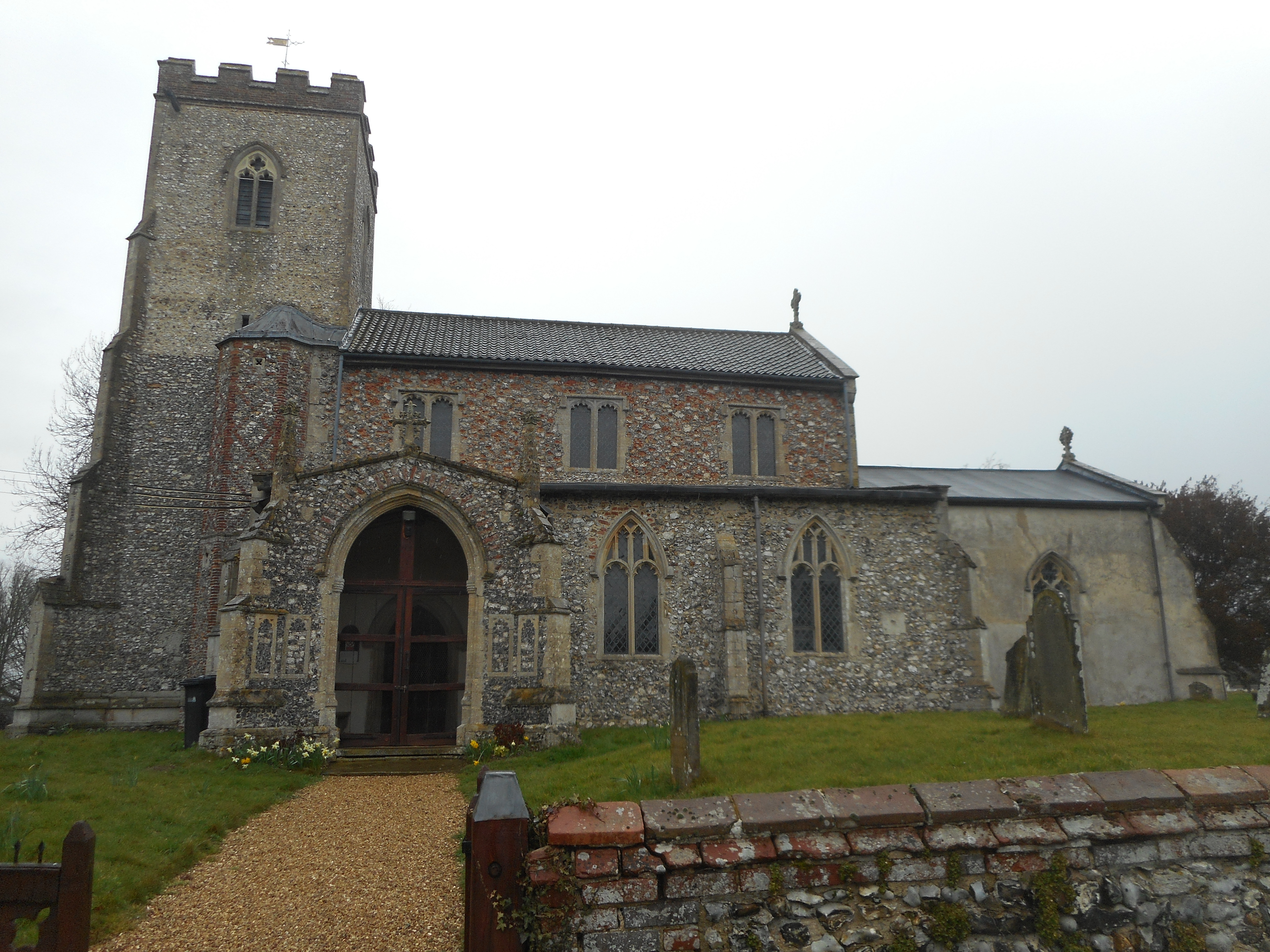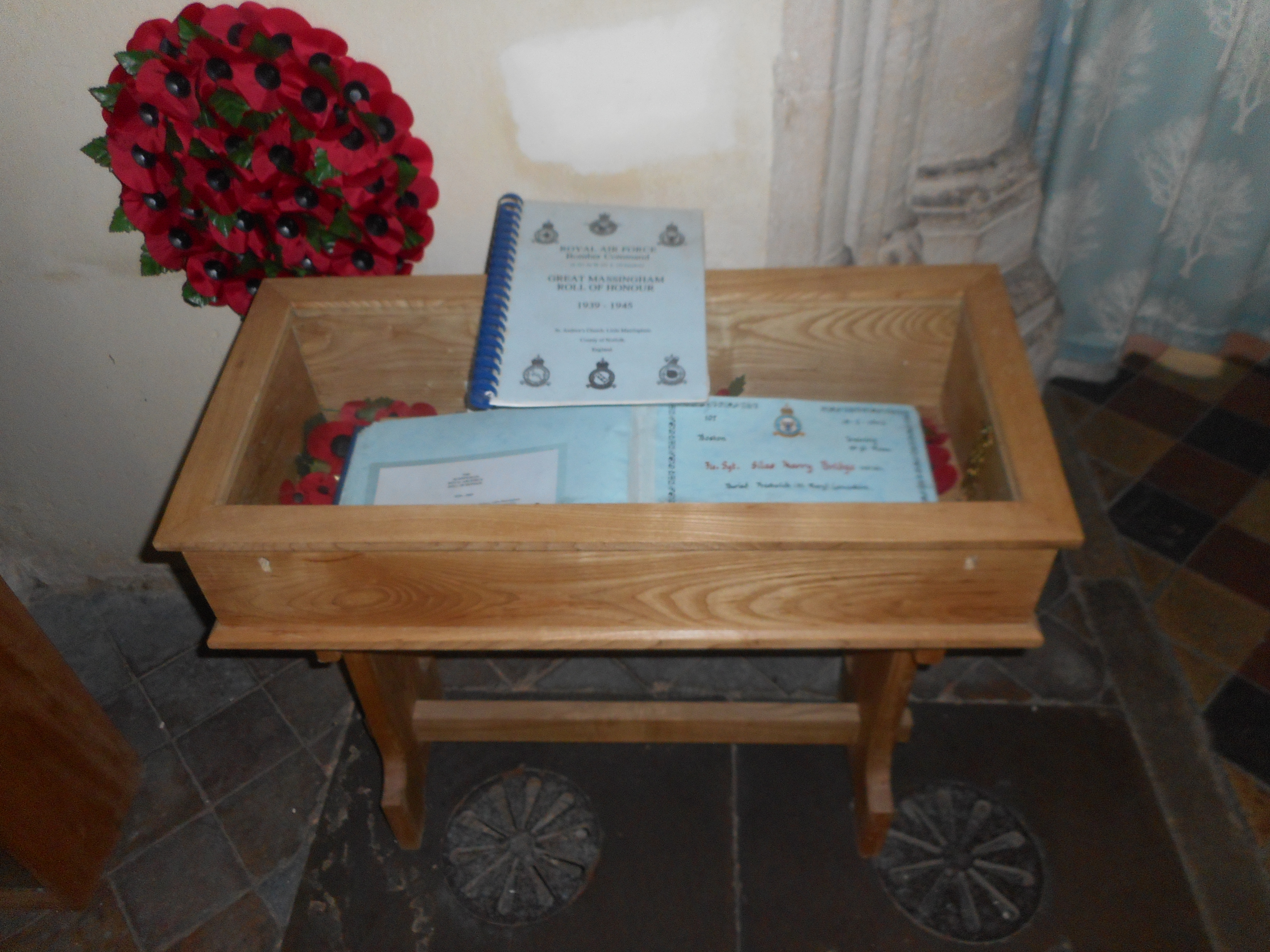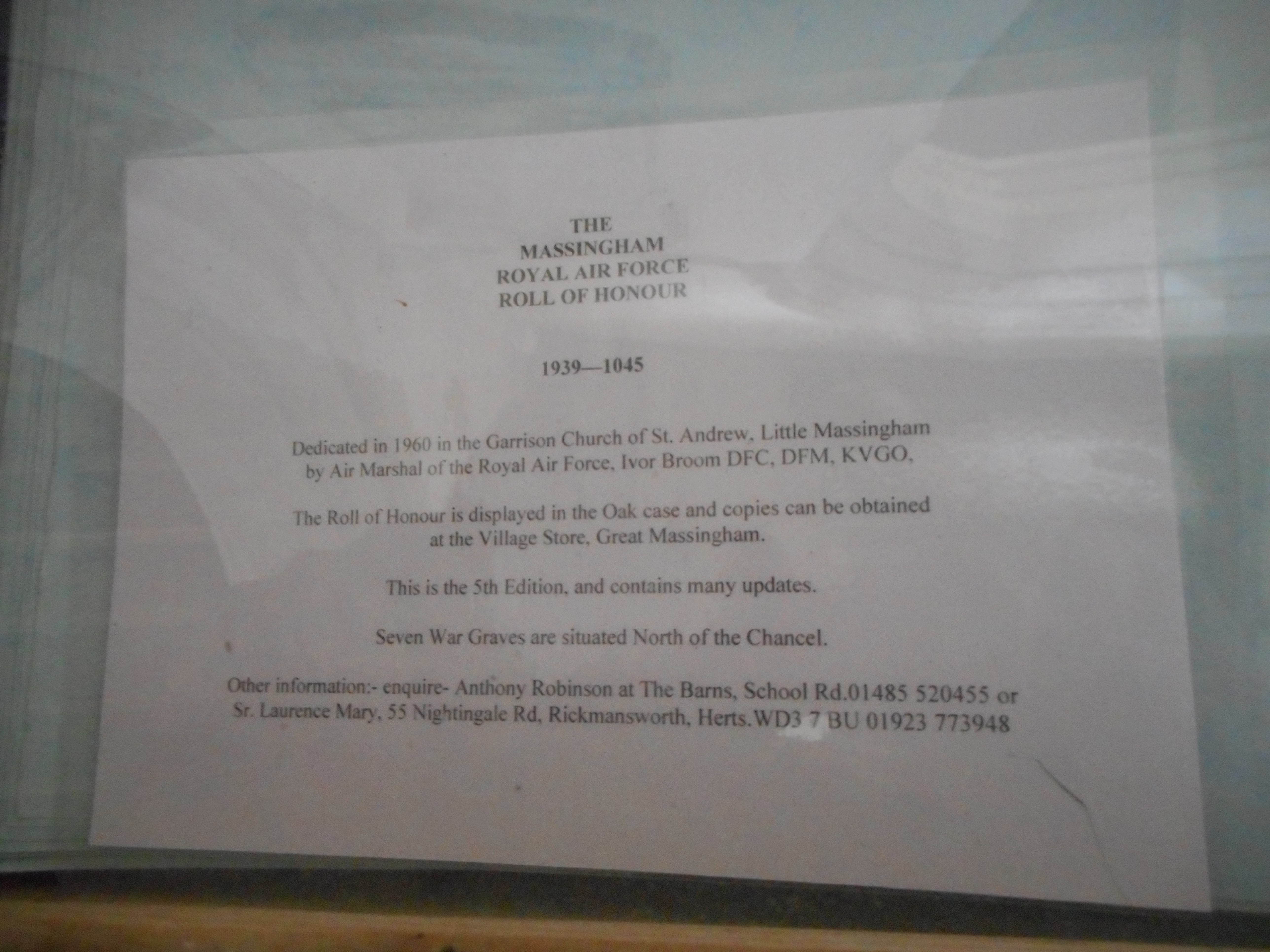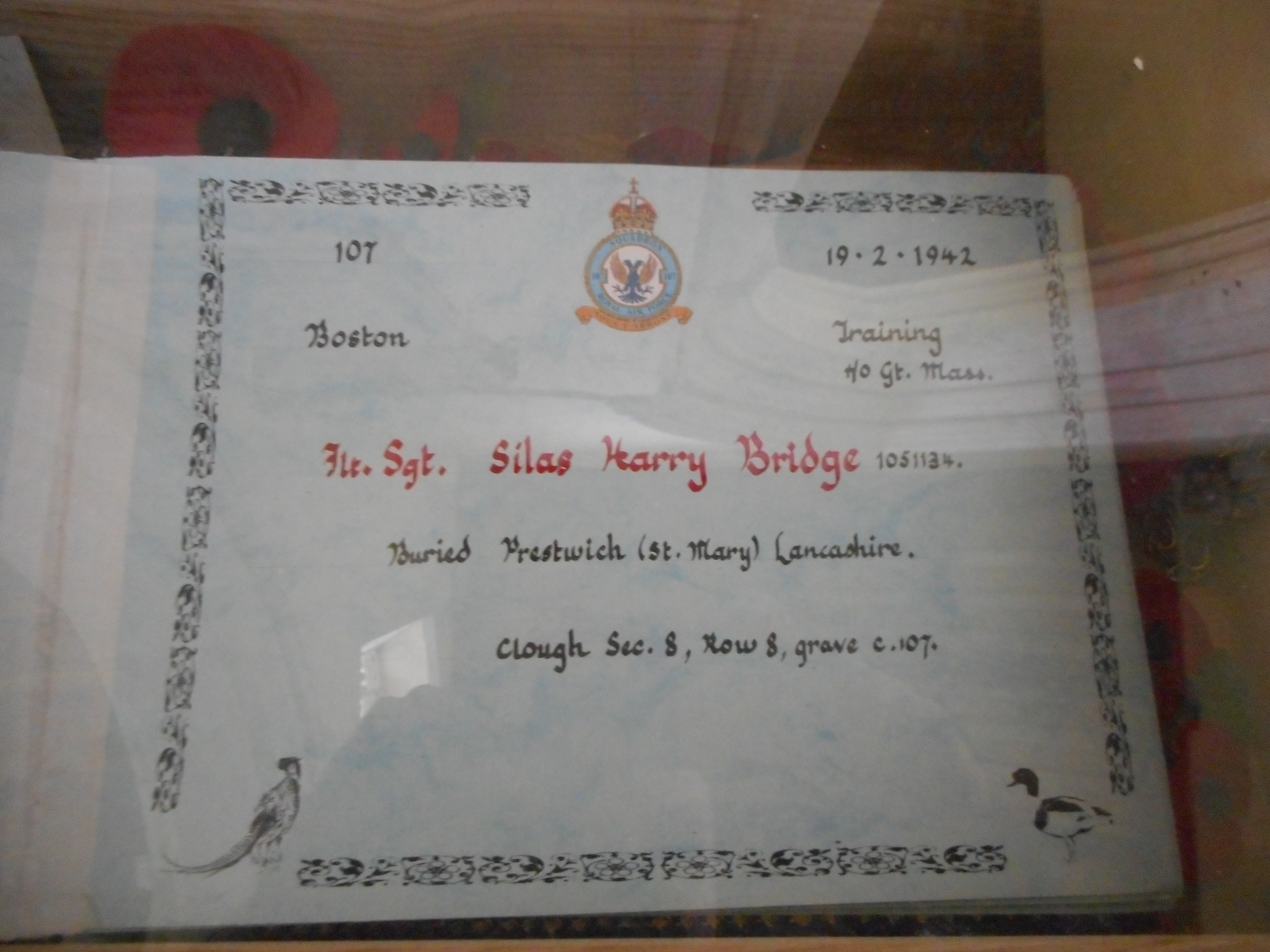Wilson, John Colin
Personal Information
| Rank | Sgt |
| Forename(s) | John Colin |
| Surname | Wilson |
| Gender | M |
| Age | 27 |
| Date of Death | 21-05-1941 |
| Next of Kin | Son of John Francis Wilson and of Eva Kathleen Wilson (Nee Madden), of Epsom, Auckland, New Zealand. |
Aircraft Information
| Aircraft | Bristol Blenheim IV |
| Serial Number | V6433 |
| Markings |
Memorial Information
| Burial/Memorial Country | United Kingdom |
| Burial/Memorial Place | Little Massingham (St. Andrew) Churchyard |
| Grave Reference | |
| Epitaph |
IBCC Memorial Information
| Phase | 2 |
| Panel Number | 267 |
Enlistment Information
| Service Number | 40746 |
| Service | Royal New Zealand Air Force |
| Group | 2 |
| Squadron | 107 |
| Squadron Motto | Nous y serons (We shall be there) |
| Trade | Observer |
| Country of Origin | New Zealand |
Other Memorials
| Location | Church of St. Andrew, Little Massingham, Norfolk |
| Country | United Kingdom |
| Memorial Type | Roll of Honour in Wooden Case |
| Memorial Text | Roll of Honour to those who served at RAF Little Massingham during WW2, including 107 Sqn |
| Location | Adjacent to Northern Perimeter of Airfield, Wattisham, Suffolk |
| Country | United Kingdom |
| Memorial Type | Stone Memorial with inscribed Marble Tablets |
| Memorial Text | A memorial to those who served at RAF Wattisham during WW2, including 107 Sqn, who along with 110 Sqn delivered the first air raids of the War |
Miscellaneous Information
| His brother, Sgt Arthur Roy Wilson RNZAF was killed on 17 January 1942 whilst serving on 12 OTU - see https://losses.internationalbcc.co.uk/loss/125570/ |
Casualty Pack Number Find Out More
| AIR 81/6562 (P359248/41) |
Commonwealth War Graves Commission
The National Archives
Last Operation Information
| Start Date | 21-05-1941 |
| End Date | 21-05-1941 |
| Day/Night Raid | Day |
| Operation | Heligoland- daytime raid |
| Reason for Loss | The formation of nine aircraft was met by accurate and intense anti-aircraft fire but the attack was pressed home nonetheless. The town was bombarded from 50 feet - low level attacks being a speciality of 107 Squadron. Four of the aircraft were hit during the attack, including V6433, Sgt Wilson being killed due to a shrapnel wound to the head. All of the aircraft made a safe return to base, V6433 with Sgt Wilson's body on board. |







